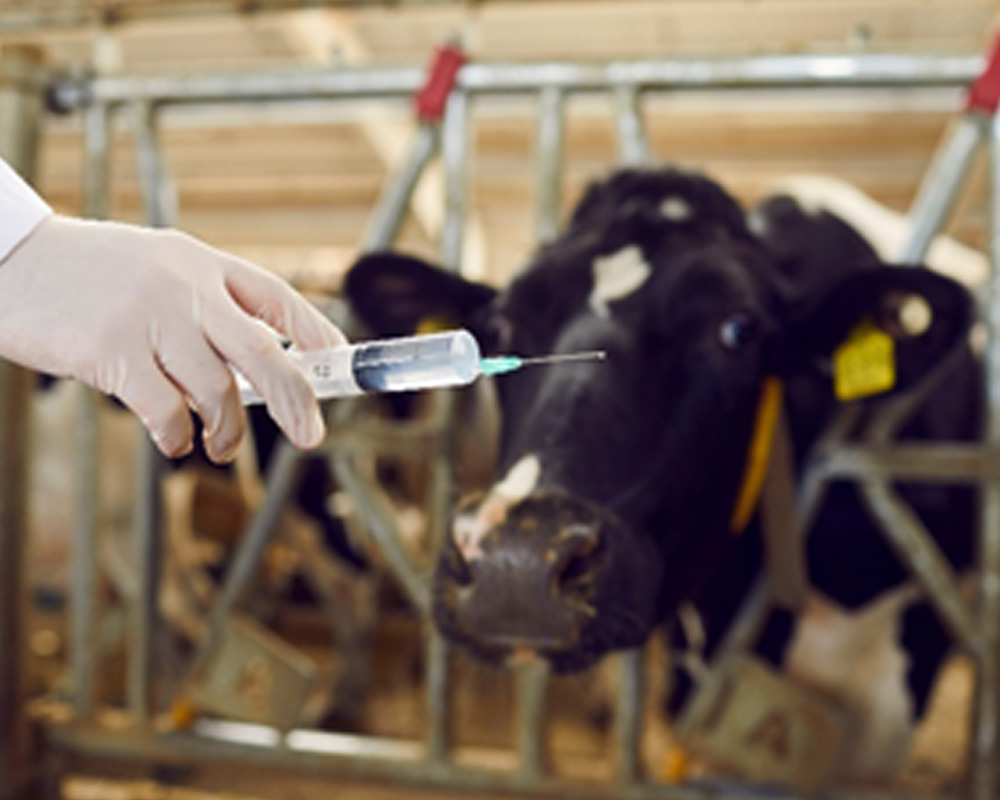Lumpy Skin Disease Causes Significant Losses Not Only In Animal Production But IN Animal Welfare As Well
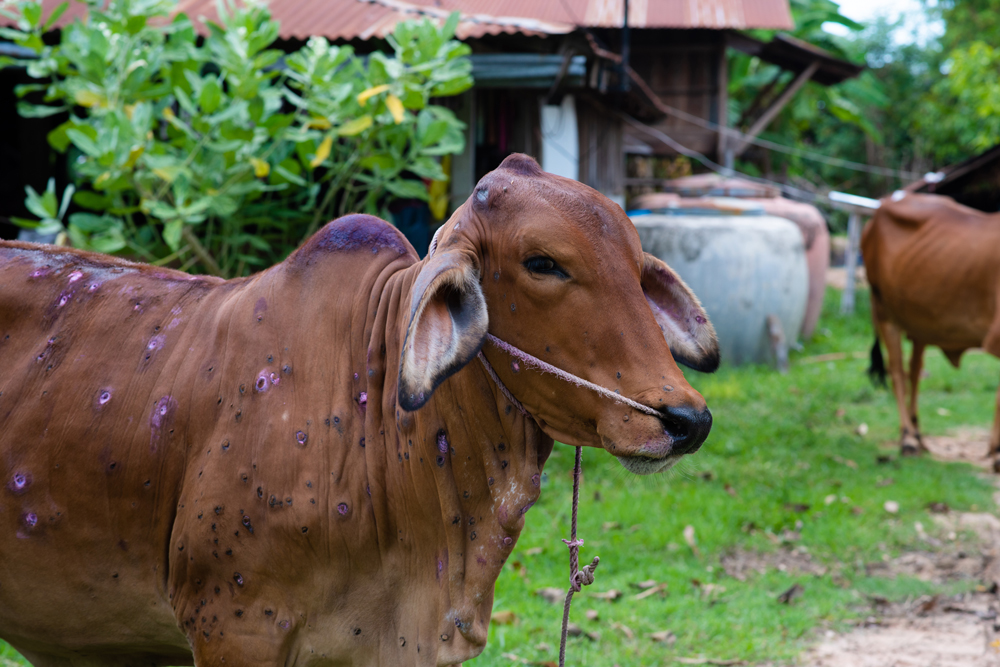
Lumpy skin disease is more common in cattle and water buffalo with low threat of mortality. It affects the production and animal welfare significantly. It is a viral disease and transmitted by blood flooding insects like certain species of flies, ticks and mosquitoes. It can also spread by fomites through contaminated equipment of utensils and in some cases directly from one animal to another. This disease can lead to significant economic losses. It can block the access of infected countries to lucrative export markets.
LSD was first reported in Asia, Pacific region, North West China, Bangladesh and India in 2019. During last two years the disease continues to spread in continental Asia including Bhutan, Nepal, Hong Kong, Taiwan, Sri Lanka, and Malaysia. Pakistan and Indonesia reported confirmed cases in March 2022.
The World Organization of Animal Health (OIE) is encouraging members to initiate vaccination campaigns ahead of virus entry in countries at high risk and to control the outbreak.
The actual source of spreading this disease is still poorly studied or investigated, but it has been believed that arthropod vectors like certain flies, mosquitoes and ticks, direct contact, use of infected or contaminated utensils or equipment like needles can the major cause of its spread. The virus is present in huge amount on the nodules or lumps on the skin of infected animal and can be isolated from body fluids like blood, saliva, nasal discharge of semen.
LSD was first reported in Asia, Pacific region, North West China, Bangladesh and India in 2019. During last two years the disease continues to spread in continental Asia including Bhutan, Nepal, Hong Kong, Taiwan, Sri Lanka, and Malaysia. Pakistan and Indonesia reported confirmed cases in March 2022.
The World Organization of Animal Health (OIE) is encouraging members to initiate vaccination campaigns ahead of virus entry in countries at high risk and to control the outbreak.
The actual source of spreading this disease is still poorly studied or investigated, but it has been believed that arthropod vectors like certain flies, mosquitoes and ticks, direct contact, use of infected or contaminated utensils or equipment like needles can the major cause of its spread. The virus is present in huge amount on the nodules or lumps on the skin of infected animal and can be isolated from body fluids like blood, saliva, nasal discharge of semen.
CLINICAL SYMPTOMS OF DISEASE
The presence of skin nodules all around the skin is the major sign of LSD with the size of about 5-50 mm (with round shape). These nodules usually appear after two days of infection on the skin of head, neck, genitalia, udder, limbs and perineum. It may cover the whole body with time.
The most common and first symptom of LSD is high fever (41°C) and swollen lymph nodes. Others may include:
- Watery eyes
- Swelling of limbs
- Increased nasal and salivary secretions
- Scabs develop in the center of nodules
- Some animals are asymptomatic means having the virus in them but can’t show the symptoms.
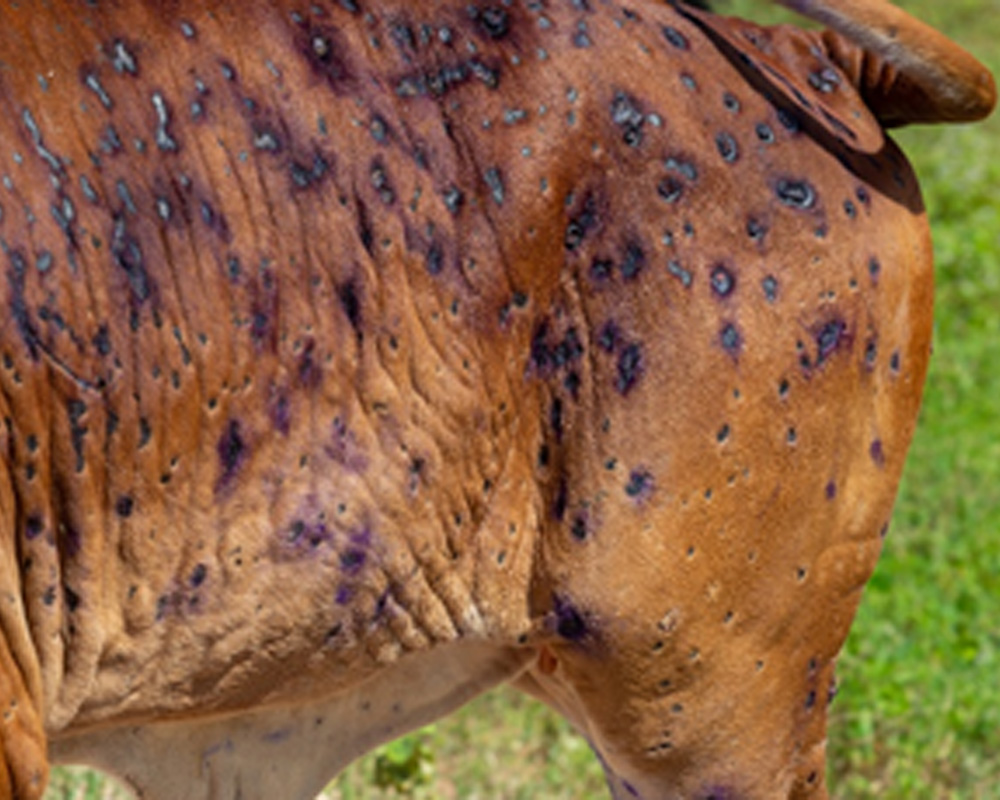
LSD cause a drastic decrease in milk production of dairy cattle following depression, rhinitis, conjunctivitis and increased salivation. It may also cause abortion in pregnant animals.
DISEASES RESEMBLING LUMPY SKIN DISEASE
Following diseases has the same appearance as lumpy skin disease and can be misunderstood:
- Demodectic mange
- Bovine Herpes mammilitis
- Ringworm
- Cutaneous leucosis
- Parapox (bovine popular stomatitis)
- Trauma including burns
- Actinobacillosis (cutaneous form via infection of Actinobascillis lignieresi)
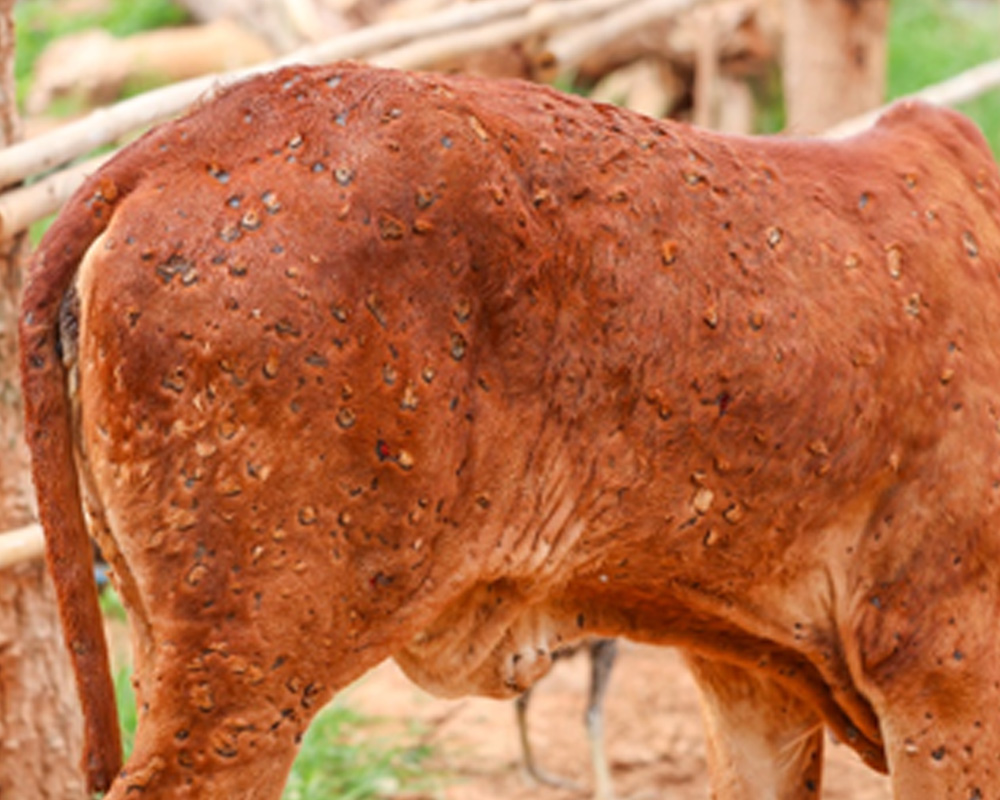
DIAGNOSES OF LSD
As LSD is a viral infection of cattle, so the most common ways of its diagnoses are through PCR (polymerase chain reaction), histopathology and virus isolation.
MANAGEMENT ACROSS INTERNATIONAL BORDERS
Highly strict livestock importing protocols has been designed to counter the risk of tropical disease invasion among international borders.
Border requirements are in working for incoming air and sea passengers, mail items and imported cargos to ensure the management of biosecurity measure at borders.
Border requirements are in working for incoming air and sea passengers, mail items and imported cargos to ensure the management of biosecurity measure at borders.
ANIMAL CARE
It is really difficult to stop cattle from the attack of infected vectors like flies or ticks when the infection has been entered in the particular area. Preventive measures should be taken strictly and on time to avoid the spread of infection among different locations and to avoid the huge loss the spread may cause. Following preventive measures can be taken for animal care and to restrict the infection spread:
Always feed your herd with best quality forages and feeds that enhance the immunity of animals. Dasan Feeds always deliver safe and quality products for better nutrition management and sustainability of dairy farming, as Dasan feeds firmly believes that sustainability and betterment in animal production and reproduction means sustainability of profitable dairy industry. If you have any query ann want more information, please contact dairy and nutrition experts of Dasan feeds.
Always feed your herd with best quality forages and feeds that enhance the immunity of animals. Dasan Feeds always deliver safe and quality products for better nutrition management and sustainability of dairy farming, as Dasan feeds firmly believes that sustainability and betterment in animal production and reproduction means sustainability of profitable dairy industry. If you have any query ann want more information, please contact dairy and nutrition experts of Dasan feeds.
Implementation of biosecurity measures:
Highly strict livestock importing protocols has been designed to counter the risk of tropical disease invasion among international borders.
Border requirements are in working for incoming air and sea passengers, mail items and imported cargos to ensure the management of biosecurity measure at borders.
- Avoiding and blocking the entry of cattle or livestock vehicles among different farms of locations as they may carry vectors or germs on them.
- Saving animals from the exposure of insects that may act as vectors like flies, mosquitoes or ticks by using approved repellents and moving animals to the location with fewer flies or mosquitoes.
- Always use sterile needles and dispose them after usage properly so that they may not be used again.
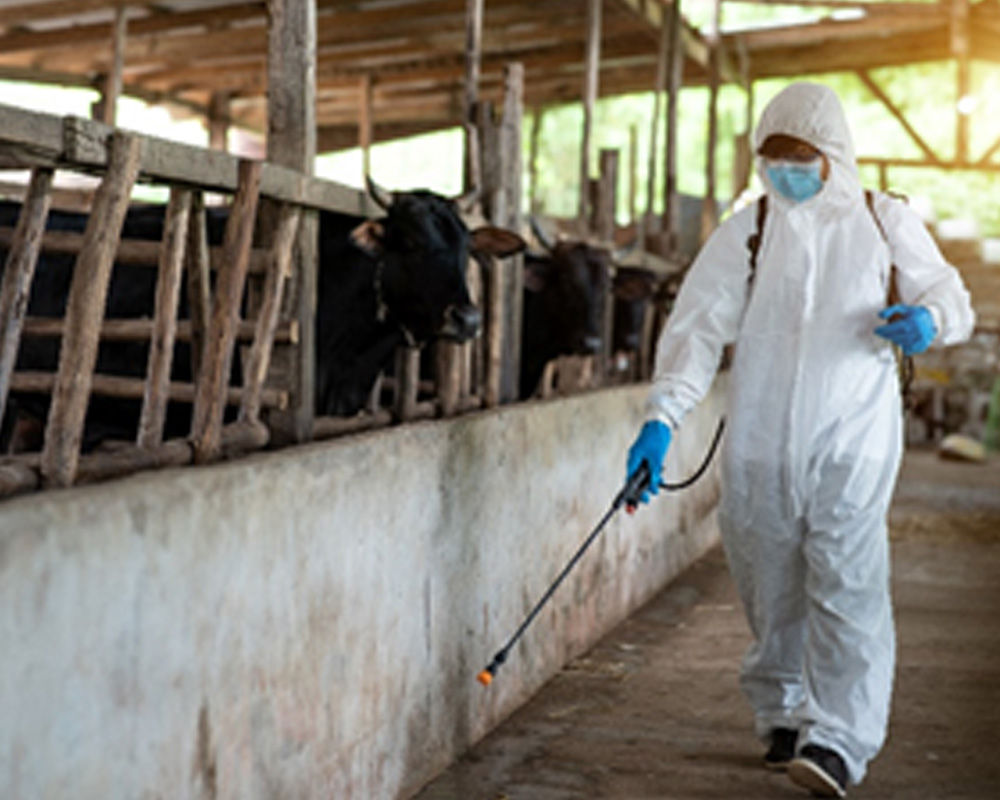
General measures to reduce LSD:
Highly strict livestock importing protocols has been designed to counter the risk of tropical disease invasion among international borders.
Border requirements are in working for incoming air and sea passengers, mail items and imported cargos to ensure the management of biosecurity measure at borders.
- Ensure the presence and use of disinfectant footbath at the entrances of stables.
- Disinfections and disinfestation of vehicles before and after carrying the livestock to different locations.
- Disposable suits and footwear should be provided to visitors.
Things to be avoid:
- Do not share animals, vehicles, tools and personnel with other stables or farms.
- Do not take your animals for grazing in such areas where flies and mosquitoes are in excess amount.
- Avoid contacts between animals of different farms or stables.
TREATMENT
Unfortunately, there is no treatment available for Lumpy Skin Disease, so vaccination is the best way of saving our animals and livestock from its attack and further loss.
Different vaccines have been imported in Pakistan since the disease is here in Karachi and Sindh province. Farmers must go for vaccination to save the herds.
Different vaccines have been imported in Pakistan since the disease is here in Karachi and Sindh province. Farmers must go for vaccination to save the herds.
